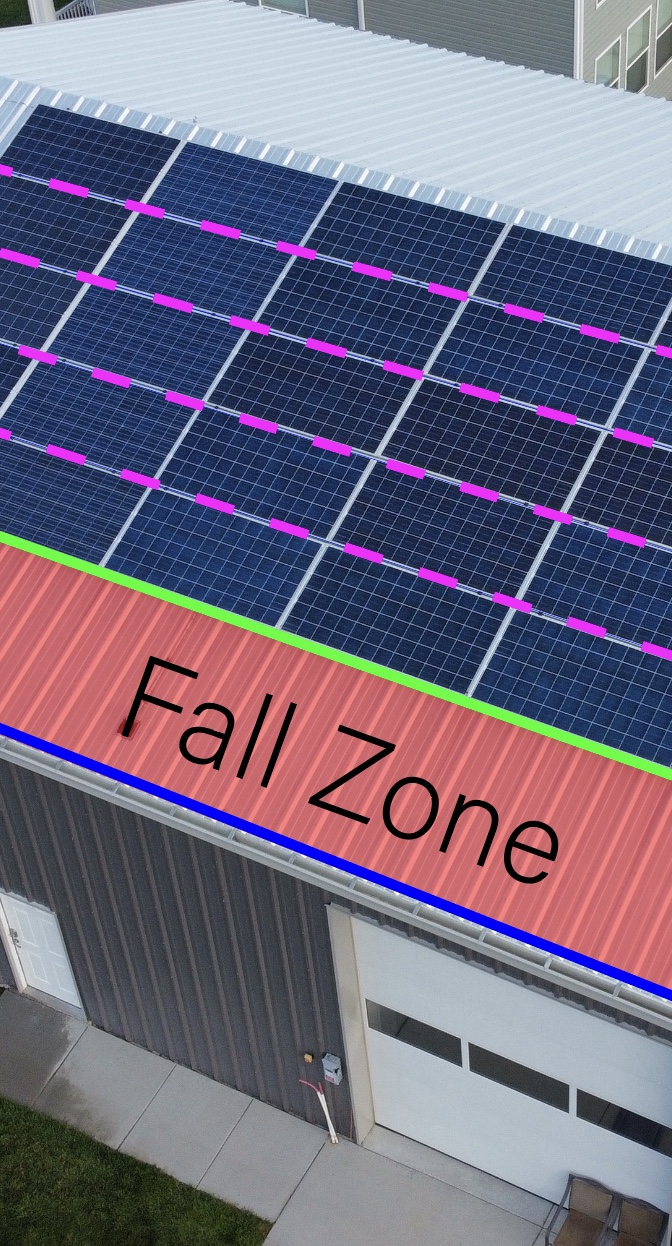Solar: Heat Tape or Snow Retention?
September 15, 2025
As solar power becomes increasingly popular in colder climates, homeowners and businesses are learning that winter weather poses unique challenges to solar panel systems. Snow and ice accumulation on panels and rooftops can reduce energy output and create safety hazards, such as falling snow or even ice dam build up in the snow slide zones. Two common solutions are snow retention systems and heat tape, each with its own purpose in preventing specific problems.
The most common concern: sliding snow.
Just as is with metal roofs, as outdoor conditions warm, solar panels will slide all at once in the form of a rooftop avalanche. In most cases, the slide will occur on part of the home that is free from danger, but it isn't always the case. Solar installed above pathways, patios, and balconies can and will cause harm to those below. Harm to people or pets isn't the limit of concern with solar. Sliding snow can also cause damage to gutter systems, your roof, or other property. Just think of those online viral videos of the guy who just finished clearing the snow from his driveway only to have it covered again in a pile of snow sliding off the roof. The sheer force of the snow piling down is concerning.
The Solution: Snow Retention
Snow retention devices, also known as snow guards or snow rails, are installed on the roof to prevent large sheets of snow and ice from sliding off suddenly. These systems help manage how snow melts and moves off the roof, allowing it to melt gradually instead of sliding off in dangerous chunks. This protects people, landscaping, and property below the panels.
Generally, Snow Retention is installed along the edge of the roof on metal roofs. However, Solar presents 3 different locations for install. Along the edge of the roof, directly in front of the panels, or in between the rows of solar.
Installing retention directly in front of the panel is the best solutions. This fully prevents rooftop avalanches and protects your gutters, awnings, and others. Installing in between panels will break up the snow load between panels, however this solution requires a specialized solar and snow retention installer. Climates with more snow may require that both in front of the panels and in between panels are installed with retention.
For those that want to protect from major slides, but still want to maximize their solar panel generation during the winter. Installing the retention on the edge of the roof will create a fall zone, an area for the snow to pile up on the roof. Some sliding or condensing will still occur on the roof above the retention. But this will clear more of the panels faster, allowing power generation to resume.

Pink: In between panels: Distributes the snow load across panels.
Green: Directly in front of panels. Recommended, Best location to prevent all potential sliding.
Blue: Roof Edge: Maximize Solar Generation while still creating a barrier from avalanches.
Removing Ice and Snow
Sliding Snow is not always the major problem. Snow can build up on the roof depending on the size of the fall zone, roof pitch, and valley locations on the home. Installing heat tape will help in melting ice and snow and prevent large snow build ups or ice dams. Install heat tape just above the soffit edge for prevent major ice build up or install it across the entire fall zone to keep all snow and ice at bay. If retention is installed along the edge of the roof or retention is not installed, only use heavy duty self-regulating heat tape as constant wattage cables will be damaged by the sliding snow and build up. The water has to go somewhere, remember that heat tape in gutters and downspouts provides a clear channel for it to leave the roof.
Ready to get started? Contact Nordic Solutions for a free quote and professional advice on keeping your roof snow and ice-free all winter long.
